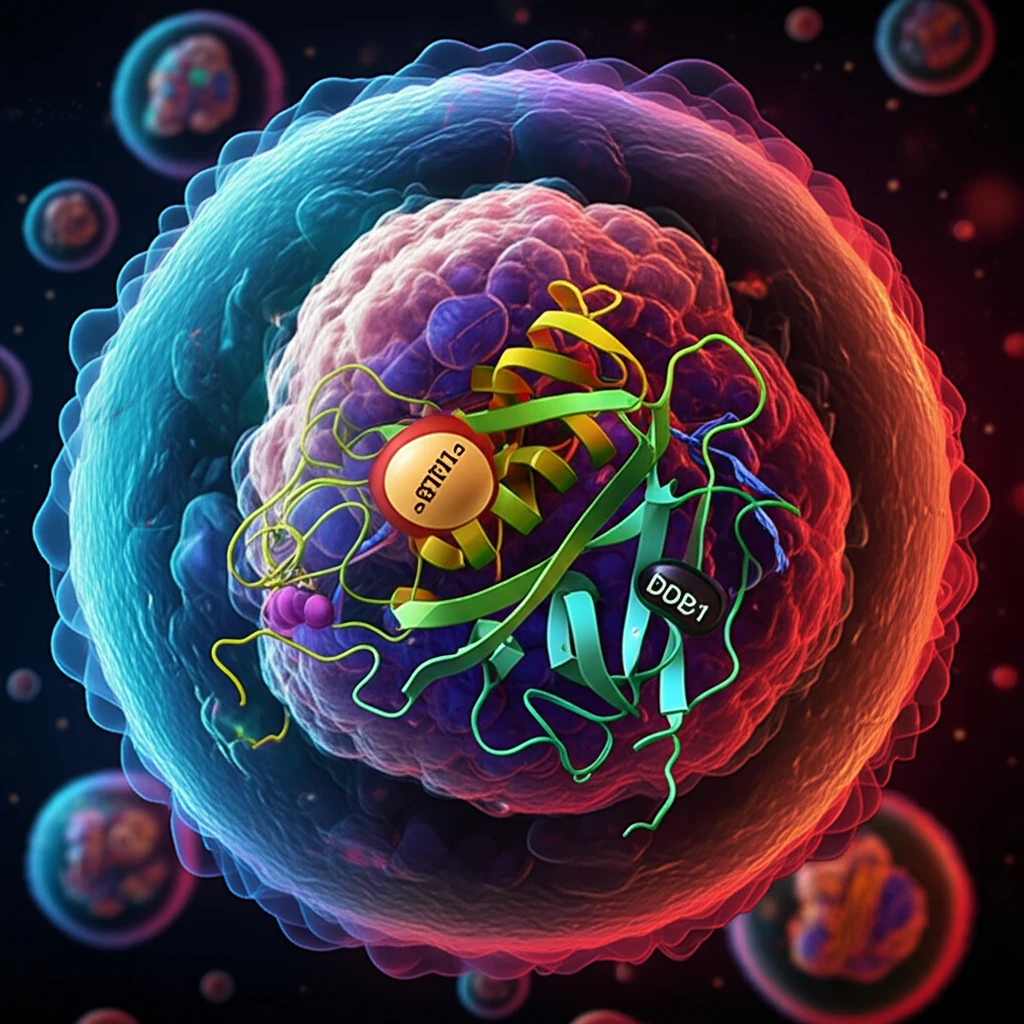
Decoding Cellular Secrets: How a Tiny Protein Holds the Key to Fighting Cancer
"Groundbreaking research reveals SIRT7's role in regulating cellular processes, offering new hope for cancer therapies."
In the intricate world within our cells, a constant battle rages. This microscopic war involves proteins, the workhorses of life, and their complex interactions. Recent scientific breakthroughs have illuminated the role of a particular protein, SIRT7, in this cellular conflict, revealing its potential as a powerful weapon in the fight against cancer.
Cancer, a disease characterized by uncontrolled cell growth, has long baffled scientists. However, understanding the cellular mechanisms driving cancer is crucial to develop effective treatments. This article delves into the groundbreaking research unveiling the intricate role of SIRT7, shedding light on its function in regulating cellular processes and offering fresh perspectives on cancer therapy.
Join us as we explore the fascinating details of this research, deciphering how SIRT7 works, its interactions within the cell, and the promising implications for future cancer treatments. Prepare to be amazed by the hidden complexity within each of us and the potential for innovative therapeutic approaches.
The Unsung Hero: Unveiling the Role of SIRT7 in Cellular Regulation

SIRT7, a protein with a complex role in the cellular landscape, has emerged as a central player in various biological processes. It belongs to the sirtuin family of proteins, which are known for their ability to regulate cellular functions such as metabolism, DNA repair, and aging. However, the function of SIRT7 has been poorly understood, but this is now changing.
- The deacetylation of DDB1 by SIRT7 disrupts its association with CUL4A and CUL4B
- This process suppresses the activity of CRL4 complexes
- As a result, the accumulation of CRL4 substrates occurs, including LATS1 and p73, which contribute to cell apoptosis
A New Frontier in Cancer Treatment: The Promise of SIRT7
The recent research on SIRT7 has offered a glimpse into a new frontier in cancer treatment. By targeting this key protein, scientists may have found a new way to manipulate cellular processes and effectively combat cancer. The potential to regulate the activity of CRL4 E3 ligase complexes and promote cell apoptosis provides a foundation for developing innovative therapies. This discovery not only enhances our understanding of cancer but also paves the way for a future where targeted treatments can revolutionize cancer care.
